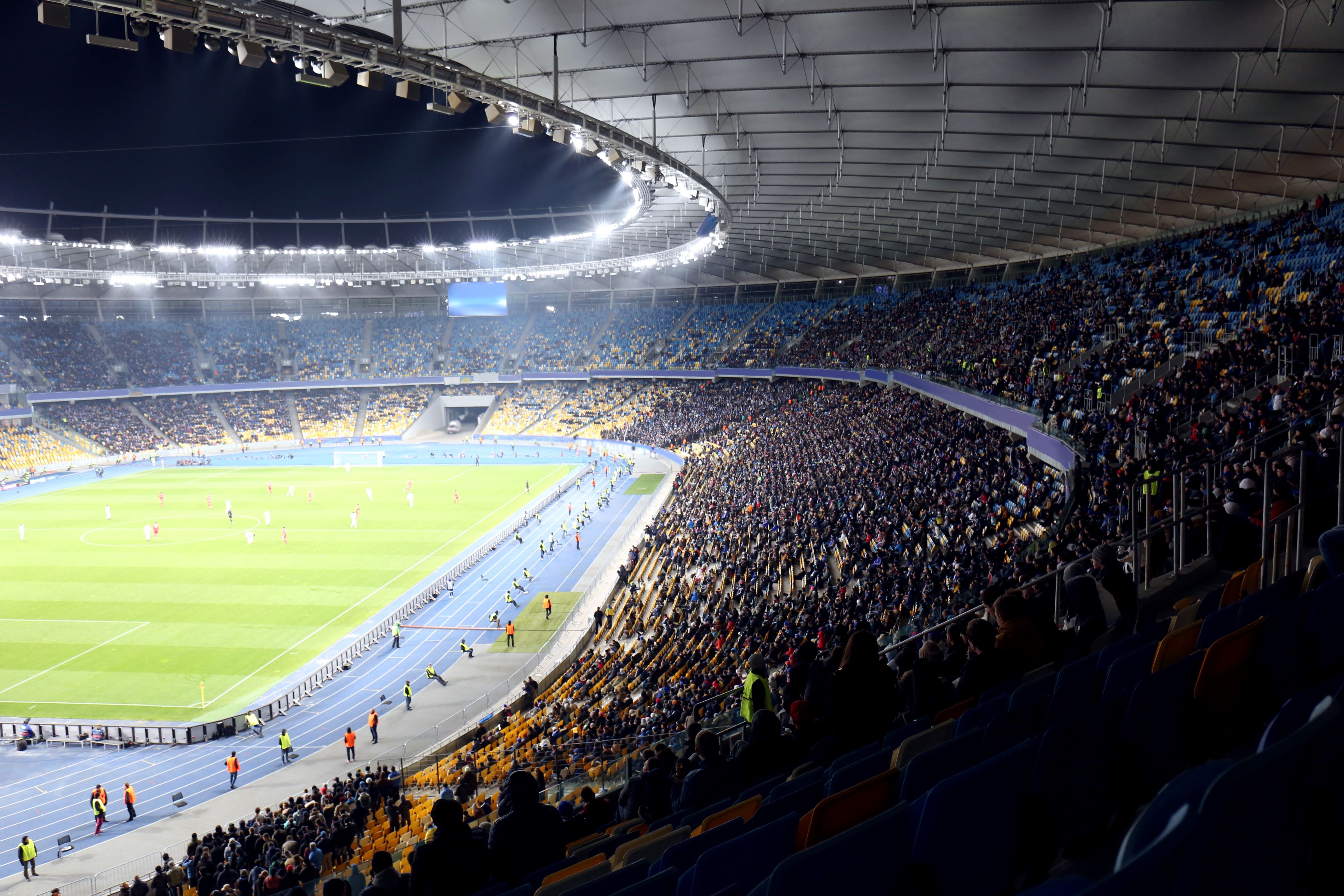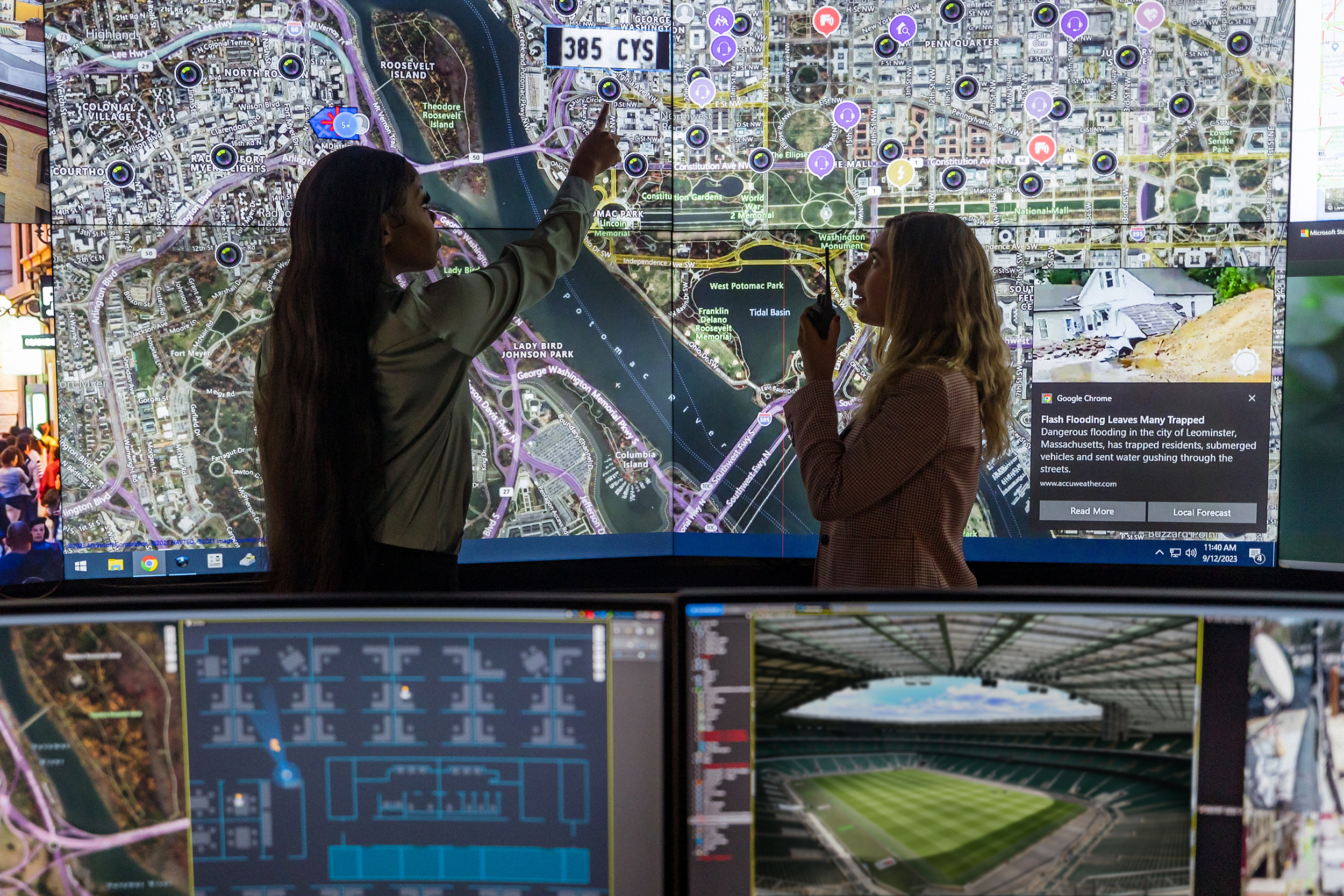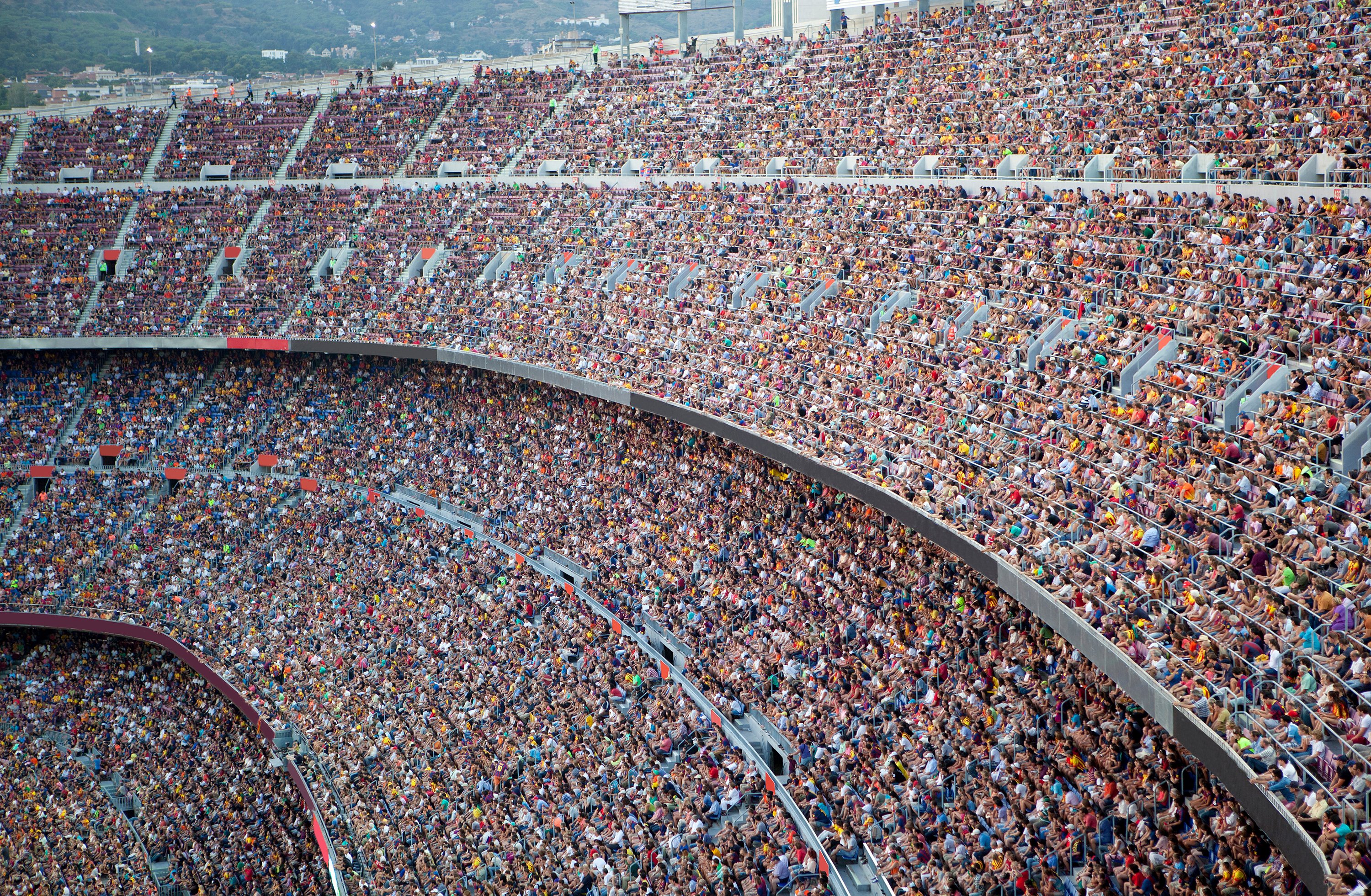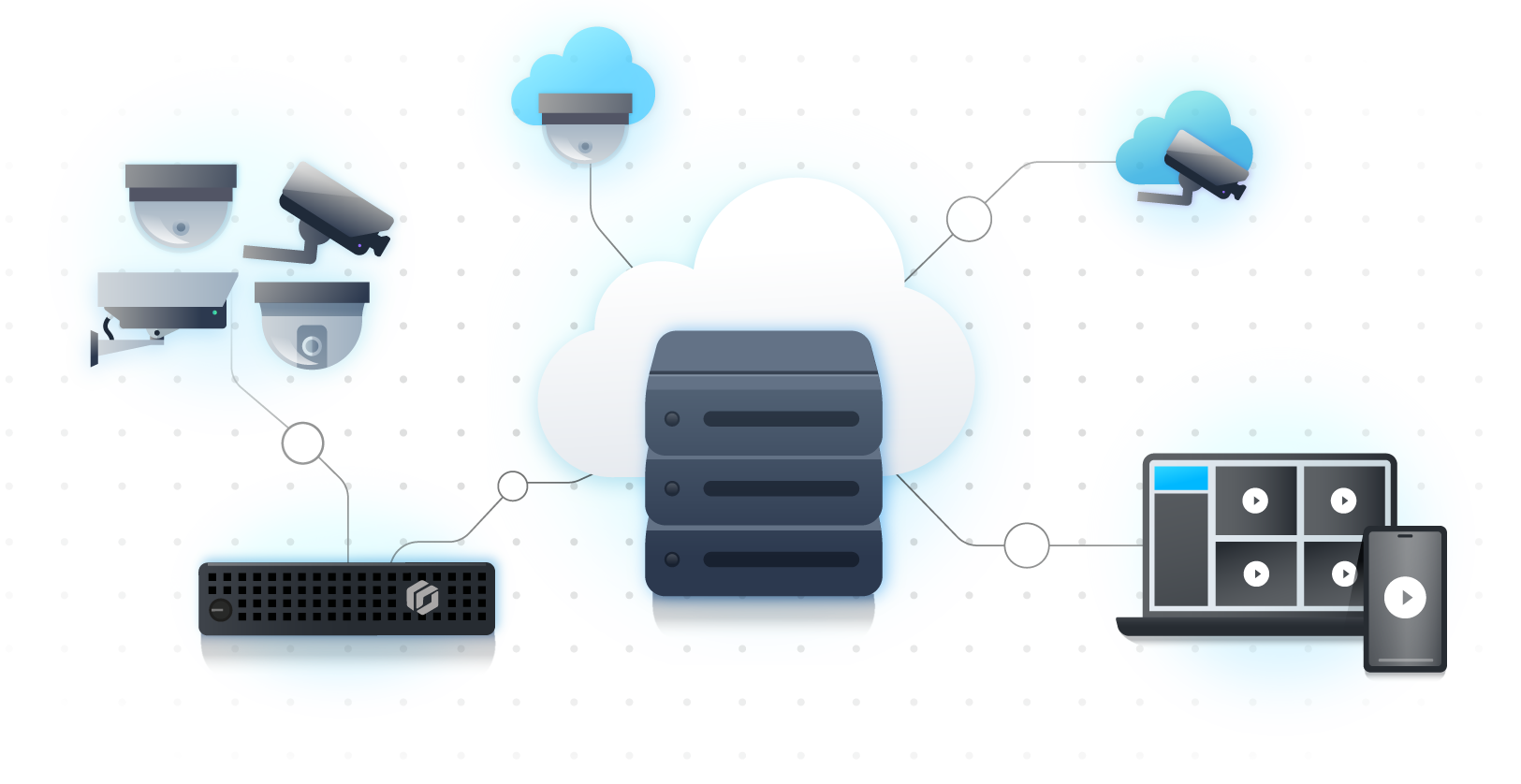What it takes to secure the Olympics
Learn why a unified front, community connections, a centralized command center, and alignment on security technology are important factors in successfully securing the Olympic Games.

The 2024 Paris Olympic Games host some of the world’s best athletes, meaning local authorities and event organizers need to secure one of the biggest public events on earth. But what onlookers might not realize is that level of preparedness doesn’t happen overnight.
Whether it’s Paris, Tokyo, Milan, Vancouver, or the upcoming Olympics in Los Angeles and Brisbane, securing the Olympics takes over a decade of detailed planning and strategizing. It also requires enormous collaboration between law enforcement, public safety, mass transit, airport and parking authorities, as well as city venues, local businesses, and countless other organizations.
So how do major cities secure the Olympics? Learn what considerations help ensure the highest levels of success.
The challenges of managing safety and security at the Olympic Games
Securing a large city is challenging enough. Add 15 million visitors, multiple dispersed venues, and the highest profile global event into the mix, and ‘challenging’ becomes an understatement.
The very nature of the Olympics heightens event security risks such as terrorist attacks, criminal activity, and protests. And with the world watching, the pressure is on. City authorities know that they must always remain one step ahead to keep these threats at bay.

In more recent years, host cities have had to invest a lot in defending against cyberattacks on critical infrastructure or assets linked to the Olympics. One unsecured device or network vulnerability can create a cascade of disruptions across events and halt everyday life in the city.
The ability to identify and respond to these risks is critical to securing the Games. And though keeping residents, visitors, and athletes safe is top of mind, so is ensuring everyone has an enjoyable experience. That alone is an entirely different type of challenge.
Having an influx of people coming into and moving about the city can strain critical infrastructure and resources like roadways, airports, mass transit services, and hospitals. There’s a higher prevalence of fights breaking out, people getting sick or injured, trains and buses reaching full capacity, roads getting jammed up with traffic, and parking lots overflowing. Since these events can have a big impact on people’s experience, it’s all factored into a city’s plan to secure the Olympics.
The biggest challenge of them all? Finding the right balance between securing the Olympic events and the entire city, all while remaining unintrusive so people can have a great experience.
It begins with a unified approach
Many people might believe that the bulk of responsibility for securing the games falls on the shoulders of law enforcement. But securing a city, or an event of this scale, doesn’t happen in isolation.

Securing the Olympics requires large-scale coordination between thousands of people and teams. Police, public safety, first responders, mass transit teams, venue security, and others need to be aligned. Staff and volunteers at Olympic events must also stay connected. There needs to be a constant flow of communication about what’s happening and a clear understanding of what needs to be done when an incident arises. The ideal outcome is that everyone has access to the same information, and that issues can be resolved before they escalate.
This level of collaboration can only happen with a unified approach. In the early planning phases, cities must find ways to bring public and private agencies together. Too often these different teams work in silos and use systems that run independently. This way of working can slow emergency response and limit collaboration.
For all these reasons, cities that host the Olympics consider building central command centers to manage operations. These can be in the form of RTCCs or SOCs and act as a centralized command post that unifies data streams and operations across city departments. Everything from receiving emergency calls and dispatching information to live video, license plate reads, and sensor data stream onto video walls for all operators, investigators, and commanders to see. In seconds, they can all watch what’s unfolding and can act quickly to mitigate the situation.
The importance of the command and control center
Typically, a command and control center, like a real-time crime center (RTCC) or security operations center (SOC) is built on a foundational, front-end solution. Choosing an open and unified security platform allows city authorities to capitalize on their existing technologies or choose devices and systems that best fit their needs.
A platform that is designed to support RTCC operations can further empower operators with automation. It does this by analyzing and correlating all incoming information and then pointing officers to the most pressing situations. All relevant videos and data are displayed on an interactive city map. This offers added situational context to make faster, more informed decisions.
Having decision support capabilities is also important. This allows the RTCC platform to guide operators through pre-programmed response procedures for various types of events. No matter what stressful situation arises, they can remain confident and in control.

For example, if a gunshot sounds near a venue or an emergency call to authorities comes in, operators will be alerted. They get immediate access to nearby cameras, license plate reads, and any other relevant information. They're then able to share that with nearby patrol officers as they respond. Operators can then monitor the situation in progress, send out any public address notices, provide real-time updates to officers on-scene, coordinate safety measures with nearby venues, and help compile evidence after it’s all over.
“Using this unified public safety platform, we’ve been able to maximize our RTCC resources to better assist other APD departments, metro partners, and surrounding communities. We’re disseminating real-time information faster, supporting investigations, and tracking crime patterns in our city. All of this helps to enhance public safety for our residents, businesses, and visitors.”
- Mark Torres, RTCC Commander,City of Albuquerque
How community connections strengthen security
The power of a command center, like a real-time crime center (RTCC) or security operations center (SOC) is that connections aren’t limited to city technologies or departments. With the right physical security platform, host cities can develop public-private partnerships to strengthen security at the Olympics. This involves reaching out to venues, local businesses, and even residents and asking for permission to connect select cameras to the RTCC/SOC.
The benefits of establishing community connections before the Olympics are threefold:
- Visibility is expanded without additional investments by federating to existing privately owned cameras
- Collaboration is achieved between law enforcement, public safety, and various other teams
- Safety efforts are strengthened by cities forging alliances with the community
Another significant benefit to establishing these partnerships is the reinforcement of security at the Olympic events on city streets. For example, cycling races can span 150km through suburban streets and intercity roadways. Having the ability to access camera feeds from devices that are already installed along those routes can be critical for authorities and event organizers to protect athletes and spectators. It provides a broader view of what’s happening, while saving significant taxpayer dollars by using devices that are already in place.
Having technology that can securely bring in camera connections from outside entities is a foundational component. It allows operators to seamlessly request access and manage all public and private devices in one view.
Beyond that, some community connection technologies can even help streamline every aspect of the program. This includes everything from the initial participant and camera registration to the legal terms and conditions. This minimizes the workload in getting these programs up and running.
“It was the first time at a command post, where I felt I never needed to leave. We were able to quickly set up a centralized monitoring facility that connected us to the cameras across each venue. I had enough coverage to get a feel for what was happening at each one of those venues.”
- Commander Kato, Special Olympics World Games, Los Angeles, California, United States.
Why aligning on security technology matters
At the Olympics, securing major sports venues is a top priority. This is where the main events are hosted and where all fans and athletes gather, so there’s a heightened level of risk.
Many sports venues will typically already have video surveillance, access control, intrusion, intercom, ALPR, and public address systems as well as a host of sensors. A common problem is that security teams may be managing these systems separately.

Unifying all these systems under one platform helps venue security teams be more efficient. From one intuitive map-based view, they can easily respond to alarms, lock and unlock doors, retrieve video, handle intercom calls, initiate public announcements, and more.
Guards can also use mobile apps to receive information from the central security operations center or handle any security task. All of this helps them better manage incidents, without disrupting the guest experience.
“Adopting a truly ‘unified’ approach, where these multiple elements are managed in a single, connected software interface, empowers security teams to make critical decisions quickly and easily with a response guided by standard operating procedures that have pre-planned the best, safest course of action.”
- Steve Green, Business Development Manager at Genetec
More than that, when venues align with the city’s command center and choose the same unified physical security platform, it ensures a full, shared view of what’s happening. Making coordination easier between resources.
6 ways to enhance Olympic security
Building a centralized command post, cultivating a unified approach, and connecting with the community are all critical success factors when securing the Olympics. But there’s so much more that cities and sports venues must think about and plan for as they map out and implement a comprehensive security strategy. Here are the top considerations:

 |
Expand with cloud solutions |
During the Olympic Games, cities will usually construct many temporary venues, stages, and event spaces. Using cloud-based physical security solutions, authorities can quickly expand coverage and get remote, temporary systems up and running fast. And since it’s a subscription-based service, there’s little risk or commitment. When the events are over, they move temporary cameras to other strategic locations in the city. As the subscription nears its expiration, they can then either choose to renew the service or simply dismantle the technology and cancel the subscription.
Cities can also implement cloud services to accommodate specific applications. For example, this can include deploying a digital evidence management system to streamline evidence sharing and collection throughout the Games.
Hybrid-cloud provides the ultimate deployment flexibility. Whether cities have system components at the edge, on-premises, or in the cloud, their team can manage everything from a centralized security solution.
 |
Increase efficiency using video analytics |
Many cities today are already using video analytics software to enhance public safety. Some of these include facial recognition, gunshot and object detection, or crowd and loitering detection. While some still question the feasibility and reliability of these solutions, video analytics and other artificial intelligence (AI) technologies can provide value to city agencies during the Olympics.
Forensic search, for instance, is a great tool for operators. It allows them to use keywords like ‘red car’ to find specific instances of video within a specific time. Crowd estimation analytics can point them toward mass gatherings to identify protests underway.
Venues can also use people counting analytics to know when they’ve reached maximum occupancy thresholds or if customer lines are getting too long. This ensures they can keep people safe while redirecting resources to enhance guest service.
 |
Collect more data with ALPR |
Implementing automatic license plate recognition (ALPR) can support security measures at the Olympics. When ALPR cameras are installed in strategic locations, city agencies or venues can find wanted vehicles, streamline parking, or monitor traffic flow across major roadways.
On city roadways, ALPR cameras automatically capture license plates and pertinent vehicle characteristics as they drive by. The system then compares that information to various hotlists, and if there’s a match, notifies officers immediately. Officers or SOC operators can also locate vehicles involved in incidents using full or partial license plate numbers or unique vehicle characteristics such as vehicle type, color, make, and model. Using ALPR data, they can narrow down their search in seconds and actively track suspects as they move through the city.
Venues can also implement plate-reading technology to track parking lot occupancy and direct drivers to open spaces. This provides greater control over the flow of vehicles and helps streamline the guest experience. From a fan's perspective, more parking payment options become possible too. Depending on how the ALPR system is set up, drivers can pay for parking ahead of time, upon arrival, or departure using their license plates.
 |
Beef up cybersecurity without compromising privacy |
In light of increased cybersecurity threats, defending and preparing for cyber attacks is a top priority at the Olympics. At the Tokyo Summer Games in 2021, for instance, there were a reported 450 million attempted “security events”. Cybersecurity strategies need to span everything from event scheduling and public broadcasts to ticketing systems and physical security solutions.
There’s also a fine balance between collecting data to secure the public and ensuring that data is protected and in compliance with privacy laws.
To achieve that balance, cities and venues can prioritize security technologies that come with layers of built-in cyber defenses and are designed with privacy in mind. This will give teams access to a host of tools that support proactive risk detection and data governance.
Physical security technology should come equipped with end-to-end encryption, advanced authentication, multi-factor authentication, and features that enhance cyber resilience.
These features can include cybersecurity dashboards to identify real-time vulnerabilities or system availability monitors to receive alerts when devices fall offline. Other options include using decision-support solutions to streamline and track maintenance tasks or leveraging widgets to get real-time recommendations to enhance cybersecurity posture.
On the privacy side, this might involve automating retention periods or using privacy masking analytics to blur identities in video frames. Being able to clearly define user access, restrict logins, control access to sensitive data, and share evidence in a highly-secure way can also help reinforce privacy mandates.
Choosing trusted technology providers is a must. This involves checking vendor’s accredited certifications, vetting their own data protection and privacy practices, and identifying whether their solutions are highly compliant and government-approved. Want to know what to ask your vendors? Get a list of cybersecurity-focused questions here.
 |
Tap into new devices |
Choosing an open and unified security solution gives authorities the ability to broaden their technology ecosystem and gradually build on what they already have to enhance their response capabilities. For some, this could involve installing IP help phones or implementing body-wearable devices and surveillance drones.
For others, this could mean tapping into Industrial Internet of Things (IIoT) data sources from other city departments such as waste management or water treatment. All of this provides additional operational context for RTCC decision-makers. They can then go beyond security objectives to know when streets need to be cleaned, or if pooling water might lead to bigger floods and address these issues right away.
Across sports venues, bringing devices such as temperature, air quality, or lighting sensors into the unified security platform can positively impact the guest experience. Operations teams can use visualization dashboards to track data and optimize the environment for fans.
Learn how cloud, cybersecurity, unification, and AI impact the success of your IIoT journey here.
 |
Choose trusted technology vendors |
Security is more than choosing the right technology, it’s also about choosing the right people.
Building a comprehensive strategy to secure the Olympics is a massive undertaking. It involves years of hard work, varying stakeholders, and many considerations. And though host cities will have common goals and challenges, no two cities will ever be identical. Different technology infrastructure, environmental and site requirements, and budgetary factors will affect planning and outcomes.
That's why having an experienced and trusted technology partner can make all the difference. From initial planning and deployment to operator training and system optimizations, the right technology vendor will stand out. They’ll be willing to work alongside city stakeholders, other technology providers, and channel partners to get the job done.
Ultimately, securing the Olympics is a shared responsibility. It’s through collaboration and partnership that host cities can ensure a safe and enjoyable experience for all.